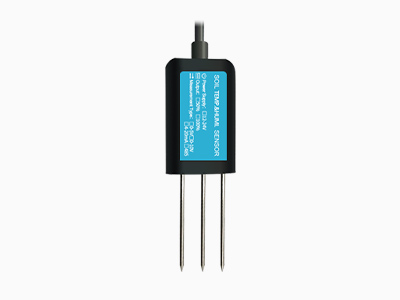Learn about soil moisture sensors
The importance of soil moisture sensor in environmental monitoring can’t be overstated. These sensors play a crucial role in measuring and monitoring soil moisture levels, providing invaluable data for environmental scientists, farmers, and water resource managers. This article aims to highlight the significance of soil moisture sensors and their contributions to environmental monitoring.

The significance of soil moisture sensors
First and foremost, soil moisture sensor help in understanding the soil-water balance. By accurately measuring the amount of water present in the soil, these sensors provide valuable information about the soil’s ability to retain moisture. This knowledge is vital for farmers and irrigation managers, as it helps them make informed decisions regarding irrigation scheduling and water conservation. With the data obtained from soil moisture sensors, farmers can optimize irrigation practices, ensuring that crops receive adequate water while minimizing water waste.
Contributions to environmental monitoring

Additionally, soil moisture sensors assist in predicting drought conditions. Droughts can have severe consequences on agriculture, ecosystems, and water availability. By continuously monitoring soil moisture levels, these sensors can provide early warning signs of impending droughts. This information allows authorities to implement necessary measures such as water restrictions or drought-tolerant crop selection to mitigate the impacts of drought on agriculture and water resources.
Furthermore, soil moisture sensors contribute to the conservation of water resources. Water scarcity is a growing concern in many regions around the world. Soil moisture sensors help in efficient water management by providing real-time data on soil moisture content. This data enables water resource managers to make informed decisions regarding water allocation and distribution. They can identify areas with high moisture levels and reduce irrigation in those regions, thereby conserving water resources.
Soil moisture sensor are also essential in environmental research and modeling. By collecting long-term soil moisture data, scientists can analyze trends and patterns in soil moisture content over time. This data aids in studying the impacts of climate change, land-use practices, and other factors on soil moisture dynamics. It helps in developing accurate models that simulate soil moisture variations, which are crucial for predicting future soil conditions and improving our understanding of ecosystem dynamics.
Conclusion
In conclusion, soil moisture sensor play a vital role in environmental monitoring. They provide critical data on soil moisture content, enabling efficient water management, improving crop productivity, and mitigating the impacts of drought. Moreover, these sensors contribute to water resource conservation and aid in environmental research and modeling. As we continue to face challenges related to water scarcity and climate change, the importance of soil moisture sensors in monitoring and managing our environment cannot be overstated.
